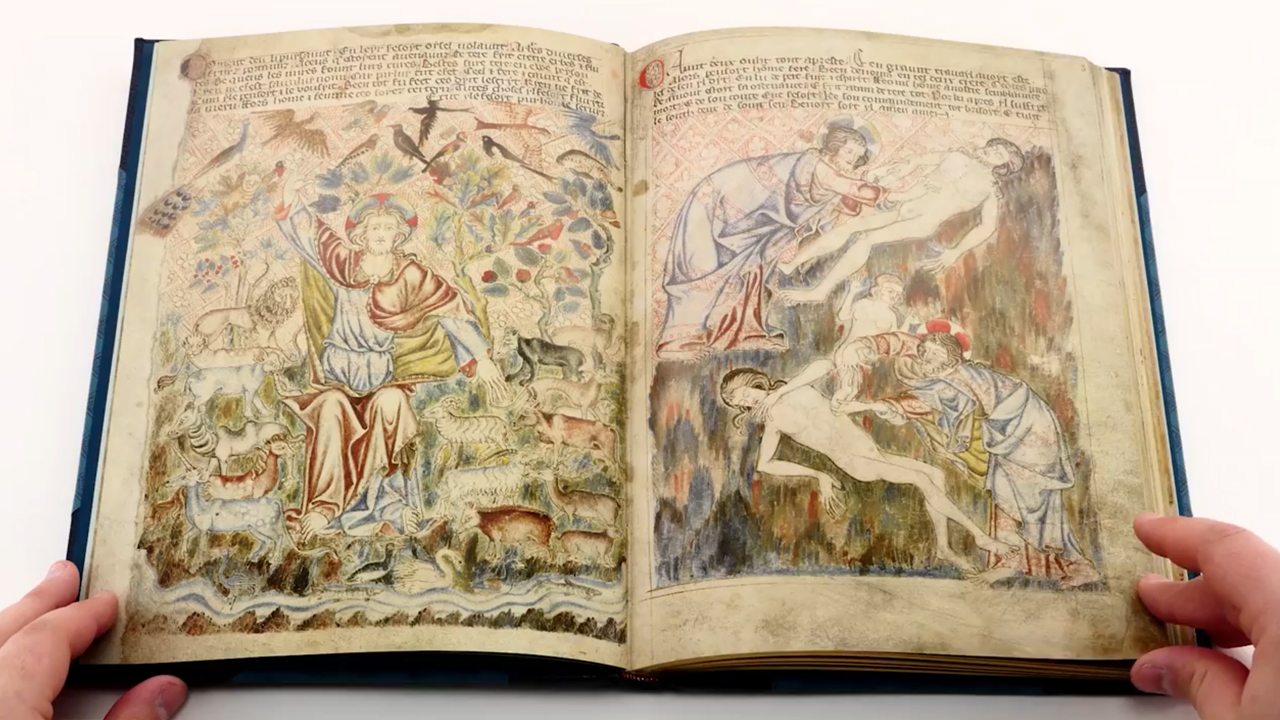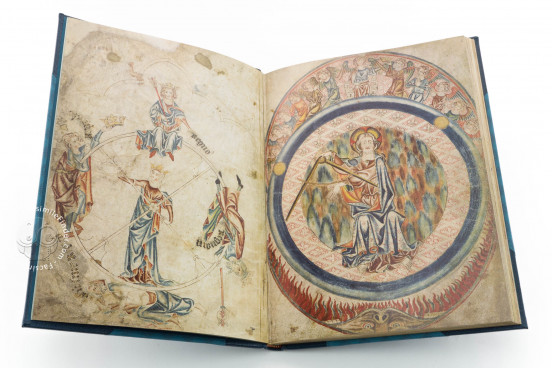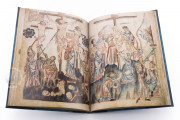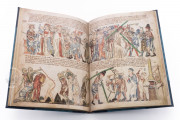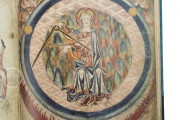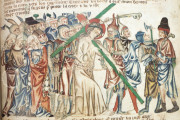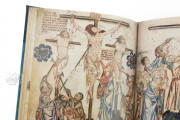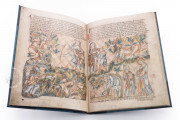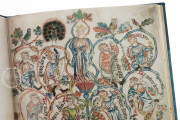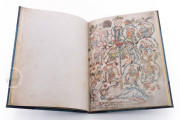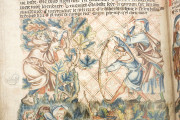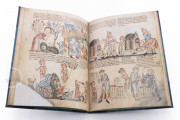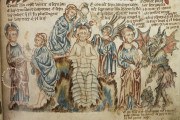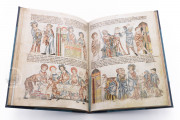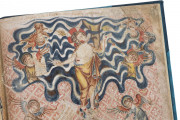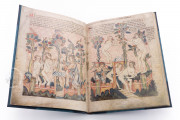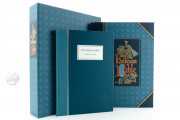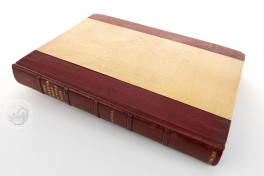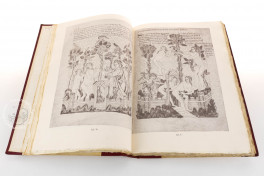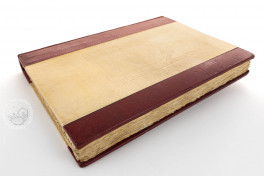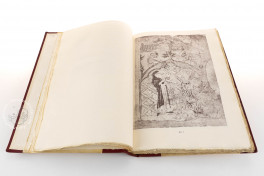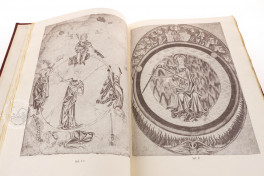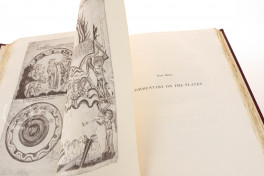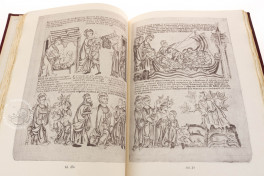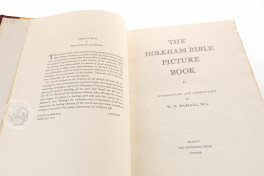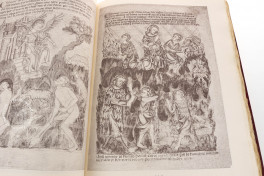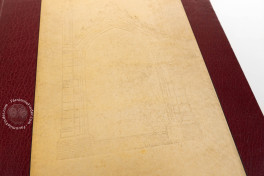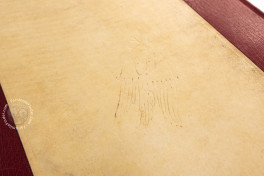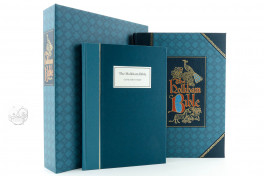The Holkham Bible Picture Book is, as its nickname suggests, a manuscript dominated by its imagery, which proceeds in a sequence of full-page compositions accompanied by inscriptions. It was undoubtedly made in London, probably around 1325-1340. The paintings are in the tinted drawing style particularly associated with England. Eighty-two of its eighty-four pages are occupied by illustrations, with from one to four scenes on a page, for a total of 231 scenes.
The manuscript's content is taken mostly, but not entirely, from the Christian Bible. Following a pair of frontispieces (fols. 1r-v), it is in three distinct sections: (1) scenes based on Genesis from Creation to the Drunkenness of Noah (fols. 2r-9r); (2) scenes from the life of Christ starting with two genealogies and extending to the Ascension (fol. 10r-38r); and (3) the Fifteen Signs of the Last Judgment (fols. 39r-42v).
A Singular Object
The manuscript's intended use is a mystery. The presence of captions in the vernacular has led some to suggest a pedagogical role, with the pictures explained to the illiterate by someone able to read the text. It has also been suggested that the manuscript might have been intended to serve as a pattern book for large-scale textiles or wall painting.
Two Frontispieces
The book's first page (fol. 1r) shows a Dominican friar conversing with an artist engaged in painting a manuscript, presumably this one. The friar advises the painter to make his painting "true" because it will be shown to a "rich gent." A depiction of the wheel of fortune, turned by Lady Fortune in the guise of a queen, occupies the following page (fol. 1v). The four kings occupying the wheel illustrate a cycle of rulership from anticipation to loss.
A Change in Plan
A poem on the opening page describes the manuscript's contents in terms that refer only to the scenes from the life of Christ, indicating that the plan for the manuscript's content was extended at some point to include the scenes from Genesis and the End Times.
Unusual Subjects
All three sections of the manuscript include scenes seldom depicted in medieval art, such as the composite scene showing the labors of Cain's family (fol. 6r) and the series of episodes from the childhood of Christ (fols. 15v-16r). The Signs of Judgment, which is extended over eight pages (fols. 39r-42v), is rare as a subject in medieval art.
Quotidian Detail
In the image of the labors of Cain's family (fol. 6r), objects of daily life are given detailed treatment, including the plow drawn by an ass and a pair of oxen and the carding combs, distaff, and spindle employed by the women. In the scenes of Jesus's miraculous punishments against childhood playmates (fol. 15v), the artist has convincingly portrayed the mischievousness of Jesus's actions.
Inscriptions in Anglo-Norman
Captions in Anglo-Norman French (the "French of England"), with occasional words in English and Latin, in verse and in prose describe much of the action that takes place in the paintings. Speech scrolls bearing text animate some of the scenes with dialogue.
Never Far from Home
The manuscript was in the possession of Thomas William Coke (1752-1842), Earl of Leicester, by 1816. It is named for his Norfolk estate, Holkham Hall, where it remained until purchased by the British Museum in 1952. The manuscripts of the British Museum library were transferred to the British Library when it was established in 1973.
We have 2 facsimiles of the manuscript "Holkham Bible Picture Book":
- Holkham Bible Picture Book facsimile edition published by Dropmore Press, 1954
- Holkham Bible facsimile edition published by The Folio Society, 2007

